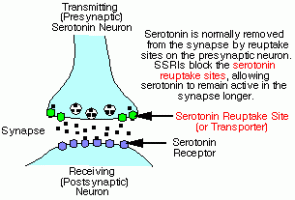Science is really good at getting us to feel cognitive dissonance, or the unpleasant internal contradictions we feel when presented with information that clashes with what already know. If you swear to lay off the cookies and cakes for a whole month but break down and gorge on the third night, you’ll feel a great deal of this. In less serious matters, the same kind of cognitive dissonance can give us a little trouble if we’re trying to understand boiling, because of our preconceptions based on what we have experienced.
Believe it or not (I hope you will at the end of this post), boiling a pot of water actually reduces the overall temperature of the water. It’s a fairly simple mechanism, but let’s dive into it on the molecular level to see why.
 When you boil water on the stove, all you’re really doing is transferring heat from the flame to the individual water molecules. They all start to move faster and faster as they gain kinetic energy, which is related to how fast you’re moving. Now, this whole time, you have atmospheric pressure pushing down on everything in your life. It’s pushing down on you, your dog, all your friends and family, and even this pot of heating water. We’re used to it, so we don’t notice pressure on us, but that pot of water definitely will. Every time a molecule of water gets enough energy, it might go bananas and shoot out of the rest of the water, which is evaporation. Hence, leaving an open cup of water out on a sunny summer day will leave the cup empty pretty soon — the sun gives energy to the water molecules and they shoot away, never to be seen again.
When you boil water on the stove, all you’re really doing is transferring heat from the flame to the individual water molecules. They all start to move faster and faster as they gain kinetic energy, which is related to how fast you’re moving. Now, this whole time, you have atmospheric pressure pushing down on everything in your life. It’s pushing down on you, your dog, all your friends and family, and even this pot of heating water. We’re used to it, so we don’t notice pressure on us, but that pot of water definitely will. Every time a molecule of water gets enough energy, it might go bananas and shoot out of the rest of the water, which is evaporation. Hence, leaving an open cup of water out on a sunny summer day will leave the cup empty pretty soon — the sun gives energy to the water molecules and they shoot away, never to be seen again.
The kicker is that these molecules in heating water have to fight atmospheric pressure, and it’s a big deal for them. Any time they try to leave the water but don’t have enough energy to overcome atmospheric pressure, they get face-punched back down into the water to roll around some more.
You know how when you tip over a glass full of ice to get the last drops of lemonade out of the bottom and then all the ice comes at you at once and attacks your nose? This is what happens when the water in the pot finally gets enough energy. It goes out to fight with the atmospheric pressure, but this time, it’s got a couple of gym rat buddies, and together they can overcome that barrier. That one atmosphere of pressuring pushing down on the water isn’t enough, and so the molecules fly off into the sunset (or into your kitchen).
 If we take inventory of all the molecules in our pot of water, we’d reason that only the hottest molecules escape, and they escape first. Since not every molecule gets heated to the exact same degree, the ones that get heated faster are more likely to leave the rest of the water behind sooner. Now imagine that the top 100 hottest molecules of water all leave the pot at the same time. Theoretically, what should happen to the temperature of the pot of water?
If we take inventory of all the molecules in our pot of water, we’d reason that only the hottest molecules escape, and they escape first. Since not every molecule gets heated to the exact same degree, the ones that get heated faster are more likely to leave the rest of the water behind sooner. Now imagine that the top 100 hottest molecules of water all leave the pot at the same time. Theoretically, what should happen to the temperature of the pot of water?
That’s right. It should actually go down. When you boil something, you’re losing the molecules with the most energy first, and everything else remains. A single molecule of water has enough energy to escape once it’s at 100 degrees celsius. Any stragglers at 99.8 or 99.992 degrees are stuck there for a little while longer, and the overall result is that when a pot of water boils, its average temperature will decrease.
But here’s the real bombshell: you don’t need heat to make anything boil. More cognitive dissonance, right? Maybe there’s a psychology post in our future…
Basically, many people may have the wrong idea about what boiling actually means. We tend to think it’s when you make something hot and then it bubbles, but that’s just a sign of boiling, not boiling itself. Boiling actually means that you’ve given some molecules enough energy to overcome atmospheric pressure wherever they happen to be. If you’re up in the mountains, there’s less air pressure overall because you’re a little bit higher up in the atmosphere. If you were in the grand canyon, you’d have not only the pressure you’d normally have on you, but you’d also have the pressure in the vertical stretch of the canyon above your head. You already know that water boils at a lower temperature at high elevations and vice versa, but now you know why. It’s not the amount of heat you need to give it, but rather the energy requirement to skip town actually changes, making it easier for boiling to occur.
If you could fly to the very edge of earth’s atmosphere, you may only find that there is a thousandth of what we consider normal pressure. At that point, you’d only need a small fraction of the energy (if you had a camping stove handy) to get your water boiling.
Finally, imagine you could make a vacuum, an area entirely free of air molecules. If you enclosed a pot of water in a vacuum, you would find that it vigorously bubbling and boiling like it was on your stove. In a vacuum, there’s no air, and thus no air particles pushing down on anything. This means there’s no atmospheric pressure. Remember our definition of boiling? Without atmospheric pressure to fight against, your water molecules will literally boil out of room temperature water. And when you go to touch the pot after a couple of minutes, you’ll find that only the hottest molecules have left it, and the pot itself is cold to the touch.
Pretty interesting, no? Now you can fight against that cognitive dissonance while you internalize this information. The next time you go to boil water, hopefully you’ll remember that while you’re heating things up, they’re actually cooling down (because that wouldn’t cause any cognitive dissonance, right?)!
























